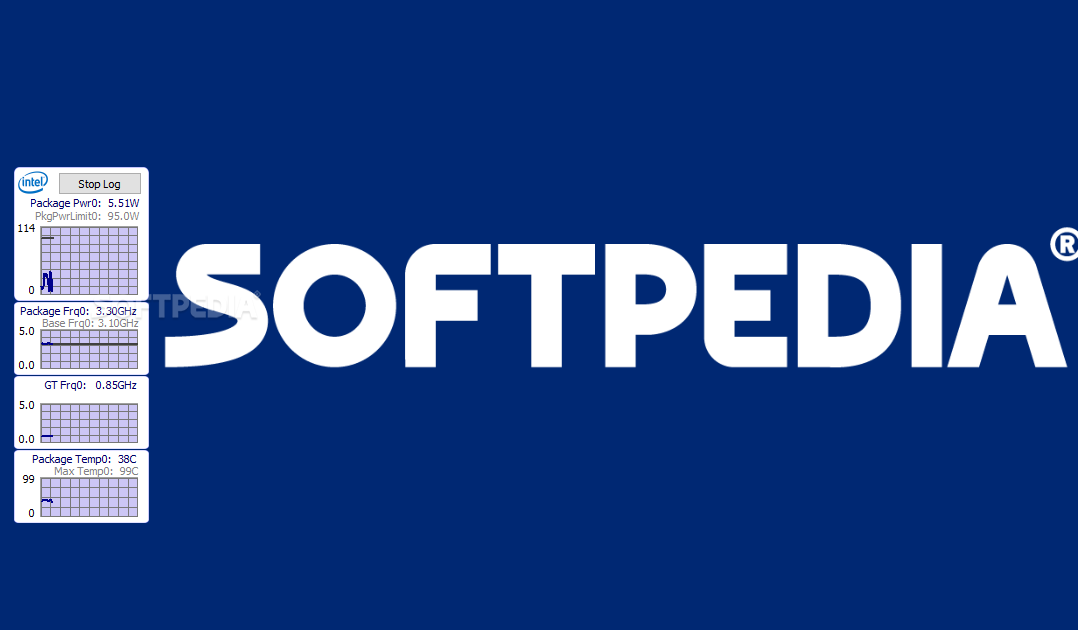

- #INTEL POWER GADGET NOT SHOWING ALL CORES PATCH#
- #INTEL POWER GADGET NOT SHOWING ALL CORES PLUS#
- #INTEL POWER GADGET NOT SHOWING ALL CORES MAC#
If you're familiar with the basic chip-level architecture of Intel's 45nm Yorkfield core quad-core processor that we showed you a few weeks back in our Core 2 Extreme QX9650 launch piece, then you've probably noticed that the new QX9770 model is simply a "speed bump" of sorts. Total Die Size: Approximately 214mm2 (107mm2 x2).Enhanced Intel SpeedStep Technology (EIST).Max processor input voltage (VID) - 1.360v.Scientists, Physicists and Gear-Heads take note, Intel is jacked up on Hafnium and is breaking out past the 40, heading for the end-zone. In the pages ahead we'll show you how a 45nm quad-core processor can stretch its legs. Though the Core 2 Extreme QX9770 will not be available for sale until Q1 2008, we've had the chip in-house at HotHardware for the better part of a month. Today Intel is previewing the world's first 3.2GHz quad-core X86 processor. In the world of semiconductors and high-end desktop CPUs, it can be said that "process kills". And with processors, smaller die geometries simply bring lower cost and lower power consumption along with killer speed. To coin a John Madden-ism, "speed kills". Not to mention both of these processors have comparable power consumption and thermal profiles. So we have a 45nm-built processor with four times as many transistors and 2X the number of cores on board, that is actually slightly smaller than the other with one quarter the number of transistors and half as many CPU cores. Comparatively, AMD's Athlon 64 X2 6000+, that is built on a 90nm process, is comprised of some 227 million transistors and has a die size of 218mm square.

The new 45nm Intel Yorkfield processor that we'll be showing you today has a die size that measures about 214mm square and is comprised of about 820 million transistors. Let's do some quick math, since we're feeling all smart and scientific.
#INTEL POWER GADGET NOT SHOWING ALL CORES PLUS#
And when it comes to processors comprised of 800 million plus transistors, every tenth of a micron counts. Few companies have the resources and capital that Intel has to bring the technology to market first. Sure, 45nm has been "demonstrated" by the likes of IBM, TSMC, and Charter Semiconductor but getting to volume is a completely different ball of wax altogether. No other semiconductor company in the world is shipping anything in high volume at 45nm.

Whether you fancy yourself a scientist that can appreciate naturally occurring isotopes utilized in leading-edge manufacturing processes, or maybe you're a gear-head that knows four cores running at 3.2GHz is just "freakin' fast" - there is no denying that Intel is completely unstoppable currently, when it comes to semiconductor process and manufacturing R&D. Processors using Intel 45nm Hafnium-based High-k Metal Gate transistor technology - 30 Million such transistors fit on the head of a pin. Titanium (Ti), Zirconium (Zr), Gallium (Ga), heck we've even heard of Rubidium (Rb), but Hafnium? Is someone at Intel just making this stuff up? Actually, it's probably a bit more complex than rocket science. We're talking rocket science here people. These days, in a 45nm Hafnium-based High-K process, it almost seems like we ( OK, OK, Intel.) can defy the laws of physics. Where on earth can you fit 30 million of anything in that amount of space? It used to be that 30 million transistors was a good-sized chip. more intelligently experiment with the optimal number of cores to use which is the one control variable available in MainStage.Thirty million transistors on the head of a pin. It I had this data I would understand what is happening much better and would be able to e.g. Yes, we get max and min - but you can't see how quickly the frequency is changing on each core or whether one core is always high and the other low. But I can't prove this very easily atm in Intel Power Gadget as I can't see per-core frequency data. My theory is the issue relates to different per core frequency oscillation/throttling behaviour because MainStage requests a very high freq and keeps the CPU temp near 100 degrees. And it's clear from the extremely helpful MainStage CPU meter the problem is the virtual instrument processing time (affects all virtual instruments in the same way).
#INTEL POWER GADGET NOT SHOWING ALL CORES MAC#
(The audio processing time is essentially the percentage of audio buffer required and the net result revealed by MainStage metering & actual glitching is I need at least 2x buffer size (latency) on the Mac Mini.) It's pretty mystifying given all other variables (OS, drivers, etc) are identical.
#INTEL POWER GADGET NOT SHOWING ALL CORES PATCH#
I am trying to understand why my Mac Mini audio processing times in MainStage (using a particular patch with several virtual instruments) are about 2.5x those on my MacBook Pro (both with similar 6-core Intel chips). I am wondering if there is a way to see per-Core frequency data in Intel Power Gadget (macOS)?


 0 kommentar(er)
0 kommentar(er)
